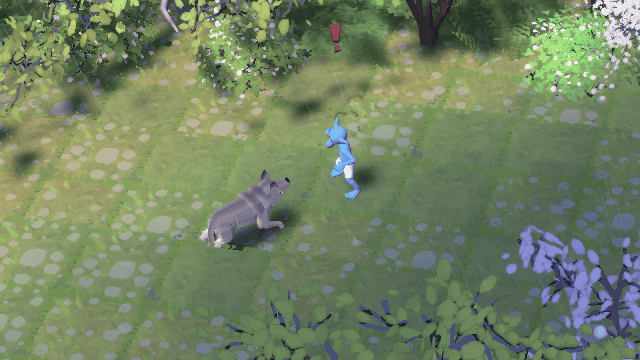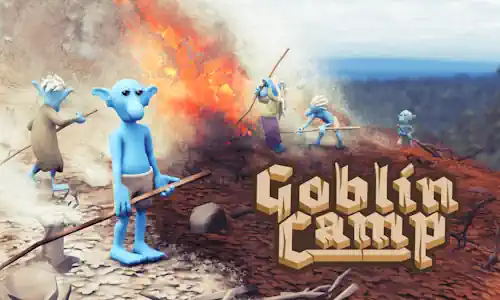Hungry Like the Wolf
Life in the northern forests can be dangerous. One of the first creatures that goblins are likely to encounter as a dangerous enemy is the wolf.
Wolves are big predator mammals and, in a sense, the “ancestors” of our dogs today. They live and hunt in packs, although it has to be said that many popular ideas about wolf packs are actually completely wrong. The idea that wolves aggressively compete for status, let alone that something like “alpha males” exist, is based on wolves living in very exceptional, unnatural circumstances. Wolves are actually quite social, even playful creatures. There’s an interesting discussion on whether it’s actually correct to say that humans domesticated wolves, in the sense that humans would somehow have subjugated wolves to our will. It seems more likely that wolves and prehistoric humans started co-operating and living together to their mutual benefit, and that it was this process that led to the evolution of the dog.
Wolves have almost certainly lived in what is now Finland for as long as humans have. Whether territorial packs or wandering individuals, wolves tend to avoid permanent human habitation, and will do the same for our goblins. Wolf attacks on humans are incredibly rare: the last time a person was killed by a wolf in present-day Finland was when the area was a grand duchy of the Czar of Russia, in 1881.
The relationship between wolves and humans started becoming more contentious with the introduction of cattle farming in the Bronze Age, and when the Sámi adopted large-scale reindeer herding in the late Middle Ages. Wolves began to prey on reindeer and sheep, and farmers and herders hunted wolves. The situation began to deteriorate sharply in Southern Finland in the 19th century, because woodcutting and pasturing cattle in forests almost drove the moose population extinct, depriving the wolves of their main food source. This led to a widespread campaign to eliminate wolves through hunting, trapping and poisoning.
Typical traps for wolves were concealed pits, sometimes with bait to lure the wolf into the trap. If the location of a wolf trap was forgotten, it could be much more dangerous to the people who originally set it than to the wolves. This is why the word for pitfall, both in the sense of a pit trap but much more commonly in the metaphorical sense of a hidden, unexpected hazard, in Finnish today is still sudenkuoppa, wolf-hole.
The campaign to exterminate wolves carried on into the 20th century, with bounties still paid for dead wolves in the 1970s. Nearly extinct, wolves were declared a protected species in Finland in 1973. Numbers have since recovered but remain low, and the subject is very controversial and politically charged today.
Given the long shared history of wolves and humans, we look forward to introducing ways to coexist and collaborate with wolves in Goblin Camp in the future. Sadly, one of the first encounters players are likely to have with wolves are with a starving individual or even a whole pack. If the winter is rough enough and the hunt unsuccessful, even a goblin will start to look edible!

So wolves are our introduction to combat in Goblin Camp, a subject we’ll have more to say on next year. Your basic goblin is a nice, peacable kind of person, and if they’re attacked by a big scary wolf, you bet they’ll run away. To protect your goblins from wolves and other enemies, you can build guard posts. Goblins will automatically be assigned to them, and will take up arms and armor to protect their fellow camp-dwellers.
Something that’s very important to us in Goblin Camp is that enemies that threaten your camp won’t just be frenzied maniacs running directly at your fortifications (unless they actually are frenzied maniacs!). If wolves are hungry enough to attack your camp, they’re not just there to fight, but to eat. If they find meat or manage to overpower a poor goblin, they’ll be satisfied and beat a retreat to digest their ill-gotten gains. In the future, as we introduce more enemy types, we aim to give them different goals and strategies so that players have to think hard when preparing their defenses.
We’ll have more on these subjects in future blog posts!
